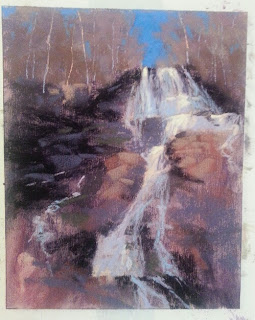 |
| Springtime Afternoon, pastel, 8x10 |
Although many artists love the idea of painting the fresh bursts of springtime color, I find spring to be the most difficult season to paint. I think the vibrant greens of spring are the most challenging shades of green to paint. Conveying the vibrancy without the resorting to the "fake, storybook" shade of green can be a tricky, fine line. And rendering the tiny buds on trees and bushes without painting too much detail presents yet another challenge.
As with any landscape, I find that balancing the warms and cools within the local color helps to convey colors to the viewer's eye that are truer to the colors that actually exist in nature, rather than simply using the local color that we're conditioned to believe should be there. How the light hits all of these colors will affect the warm and cool hues.
Summer greens tend to have deeper, richer greens, whereas spring greens often have a variety of colors as they're in transition from their winter state. The foliage on the trees also is generally lighter in value than summer trees, since the foliage is still somewhat sparse, allowing more sky to peek through.
Below are a few progression shots from my demonstration of "Springtime Afternoon."












